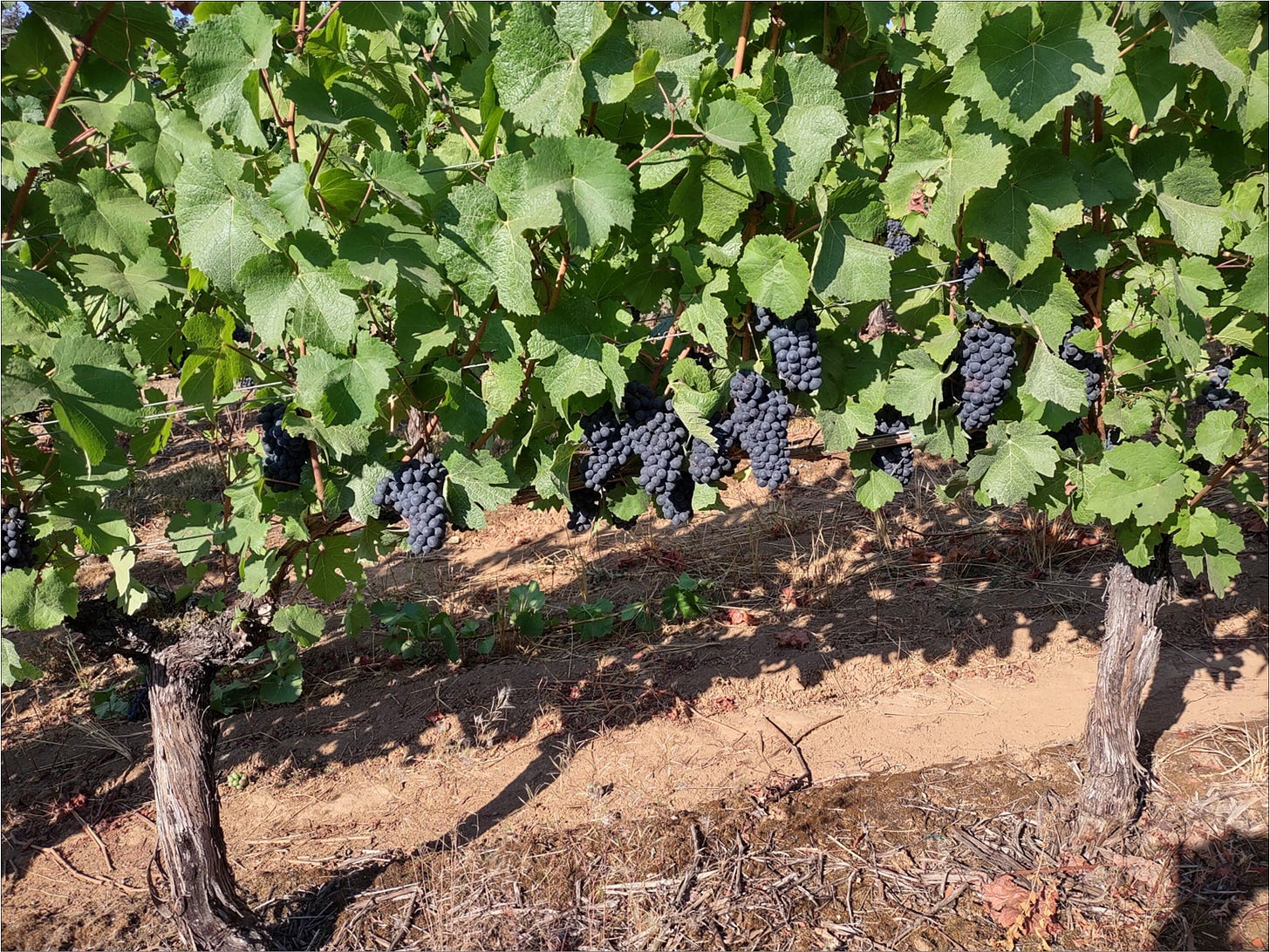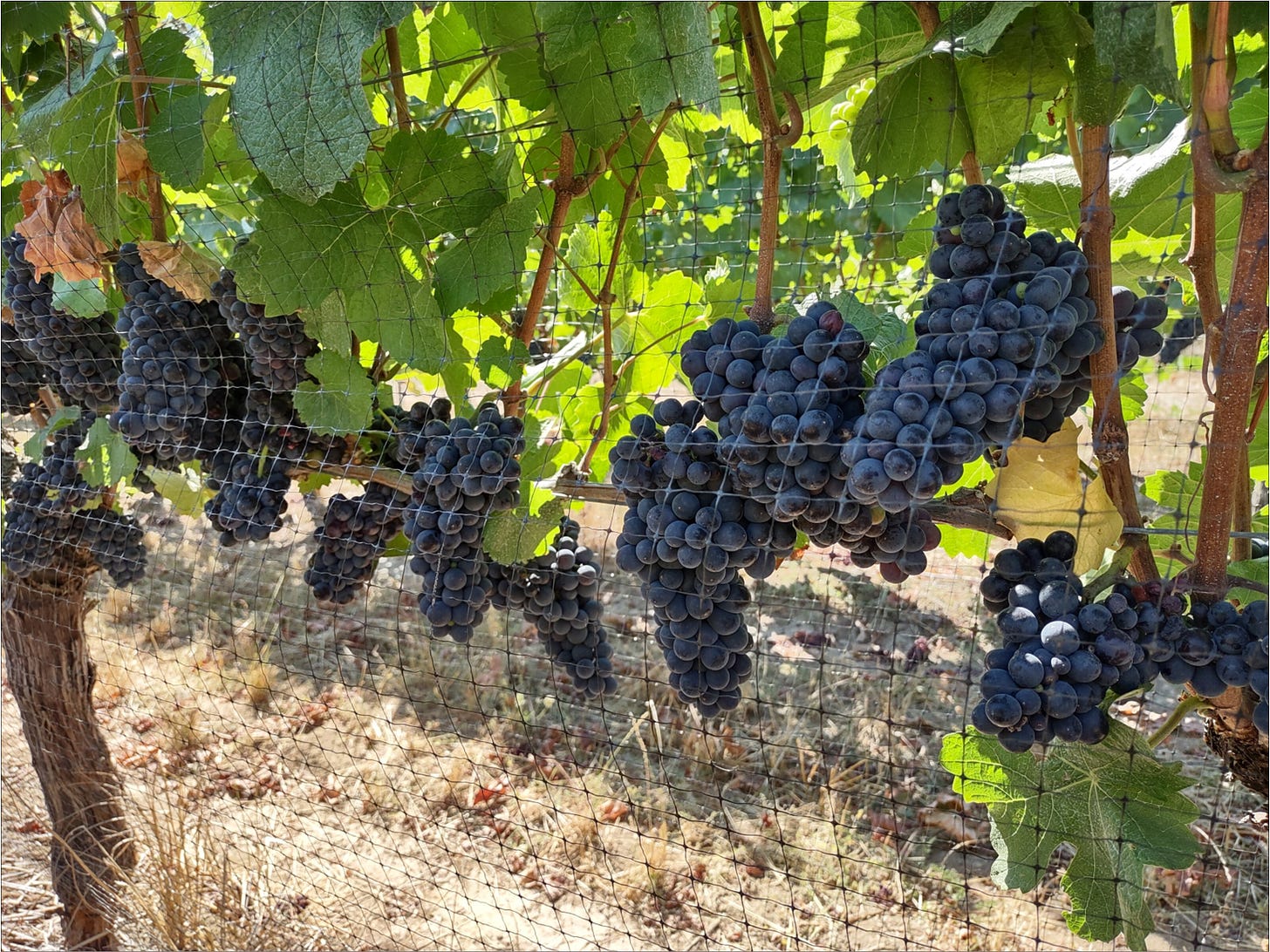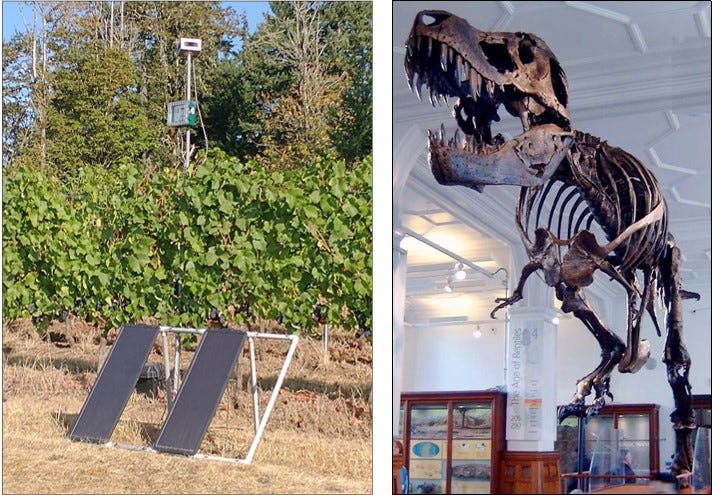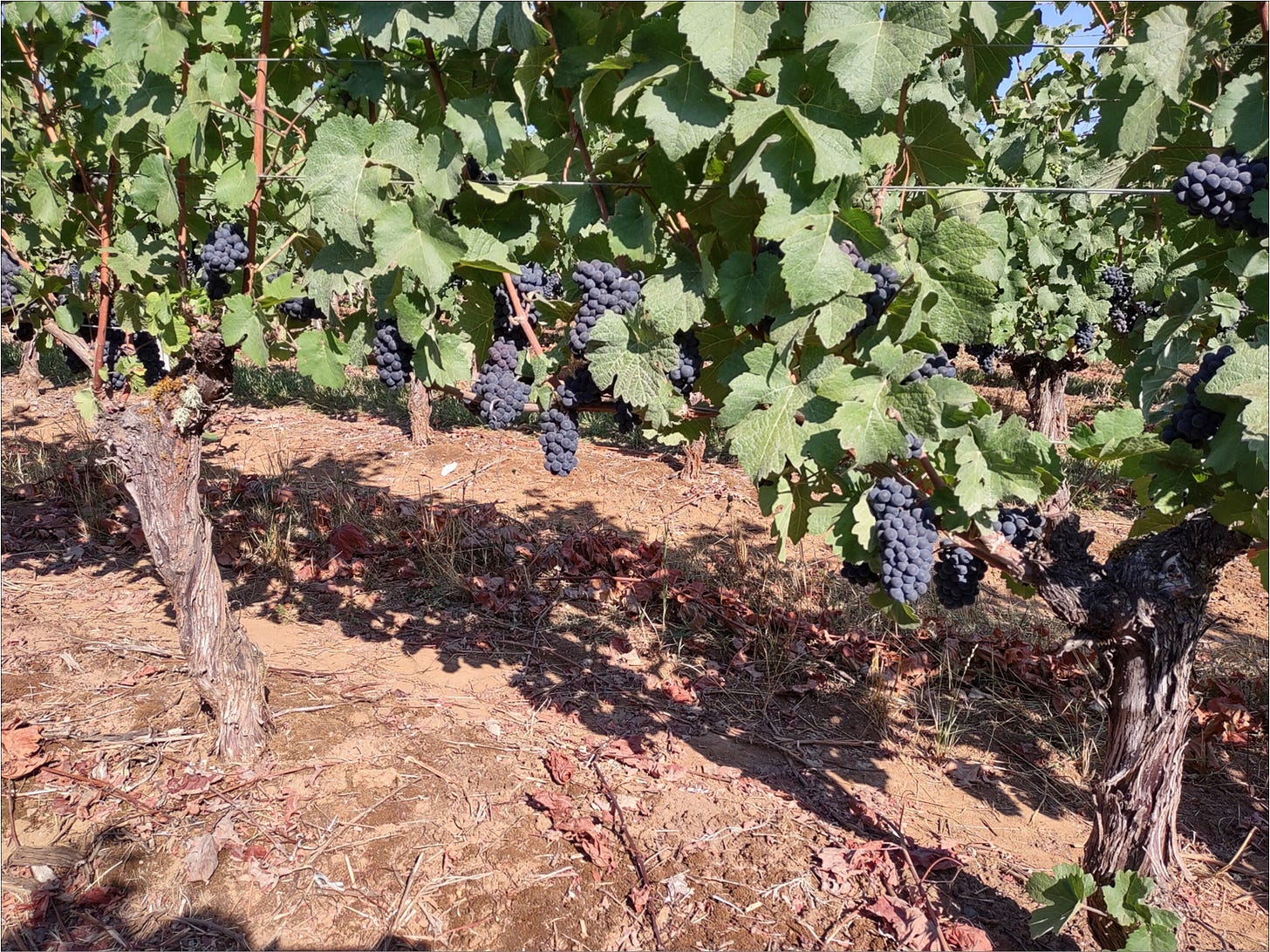Amalie Robert Estate: Pre-harvest Situational Review
Hello and Welcome,
As you may be aware, here in the Willamette Valley we are precariously close to commencing The Great Cluster Pluck! It happens about this time each year, depending on when the Pinot Noir flowered. In our case that was June 27th, then we add 105 days to ripeness and Voila! Here we are.
Notably, this annual event attracts all manner of participants. From the birds and the deer that want to eat our wine berries to the yellow jackets. Yellow jackets not only want to eat our bounty, but they also want to inflict as much pain as possible on anyone who interacts with their environment.
As we see from the graphic above, there are 4 species of yellow jackets. It is said the V. germanica is the most aggressive of them all, but verifying that hypothesis is an exercise left to the reader. We can neither confirm nor deny.
The Big Picture
As the time draws near, we draw inspiration from our Torch. This ancient walnut tree is an indicator plant. The leaves begin to senesce about the same time the wine berries are ripe for winemaking. The aforementioned pests, while they may acknowledge this milestone, are not constrained by it. The birds, however, have one less place to hide from our airborne raptors once the leaves are gone. For now, the walnut is standing fast with leaves that are as green as the day is long.
Planning to enjoy traveling again and exploring the Willamette Valley? Amalie Robert Estate is open year round by appointment for vineyard tours and tastings. Request a tasting appointment with your preferred day and time.
As is customary this time of year, we are offering all the yellow jackets you can carry away for FREE! We suggest you bring a container with a snug fitting lid, so the yellow jackets do not escape into your vehicle and interact with your environment as you are driving home. No purchase necessary.
Winemaking: The Continuation of Terroir by Other Means.®
This is our Brand Terroir. The repository of our farming history at Amalie Robert Estate. We have over 200 posts going back some 20 years. It’s all out there on Substack, and your subscription is FREE. More than you would ever want to know about the agrarian endeavor of farming wine. Browse our index of posts by vintage. You can also view Substack without subscribing.
Follow us on Instagram @AmalieRobert.
Every picture tells a story. Follow along on Instagram as we wind our way down the road to harvest. We will be posting much more frequently as we begin The Great Cluster Pluck.
The Main Story
We (as in Ernie), affectionately refer to this time of year as Okto-Vember. In Oregon’s Willamette Valley, the fall showcases Mother Nature’s best work. From the bounty of Pinot Noir wine berries to the full color palate of the leaves that ripened them. The imagery and scent of fall is exhilarating.
Great risk is an old companion to great reward. Prior planning and a bit of luck can lead to a successful harvest, especially if the luck you get is good luck. That’s the best kind. We try and focus on the events we have some semblance of control over including:
Bird Warfare: In the agrarian endeavor, we have come to accept that if you are achieving 80%, you are doing pretty well. To achieve this level of success we employ 3 tactics to try and keep the majority of what we grow from taking flight. The first is bird netting. This is pretty old school, in that you (manually) place the netting over the wine berries in such a manner that the birds, deer or racoons are physically deterred from filching your fruit.
The second is replicated bird calls. This is a bit more high-tech. The idea here is that you are broadcasting sounds of birds over the vineyard. And not just any birds. You are trying to deter the “Target Species” by broadcasting calls of them under duress by the “Threat Species”.
Specific to our application, the target species include robins, starlings, cedar waxwings, and the Northern flicker. Examples of them under duress would include being captured or under physical threat including imminent danger. Threat species specific to our environment include red-tailed hawks, Cooper’s hawks, sharp-shinned hawks and kestrels. The specific type of duress the threat species can provide revolves around sourcing their next meal.
Stan picture credit: The original uploader was Billlion at English Wikipedia.
Unfortunately, the Tyrannosaurus Rex call was unavailable. However you can read about Sue and Stan on Wikipedia. It has all the makings of a pre-historic love affair.
And the third component of this strategy is air patrol by the threat species, They also hear the calls, and are attracted to the notion that their may be an abundant food supply in the area. You know this is working when you do not see any of the target species, but you do see the threat species patrolling the “Kill Zone”. That, and the vines are not missing any wine berries.
Rainfall: While this may be a stretch for some, Ernie has perfected the rain dance. On clear nights when the moon is bright he is out there by block 2 channeling the powers that be - in a reduced state of dress. No one really sees this except the occasional deer or nocturnal racoon, but he is convinced that he is having an impact. Our last measurable precipitation was July 6th registering 0.16 inches.
Now a brief mention of the things we cannot control, aka the elephant in the room. Wildfires are not that much of a problem unless you are co-located with them. Then you hope you have enough warning, and a clear escape route to evacuate the area. And subsequently, the proper insurance.
Smoke: The big concern as we move into Okto-Vember is air quality. Smoke is what is produced as fire combusts available fuel. As fires are extinguished, they have a tendency to smolder for some time and continue to produce smoke.
There is a difference between forest fires and wildfires. Forest fires burn forests, which are mainly trees and any target species that are trapped within them. Wildfires typically start in forested areas, but do not recognize any bounds. As we bore witness to in 2020, wildfires can consume entire towns and everything in them including cars, homes, wineries, gas stations and industrial facilities. The pollutants, including carbon dioxide, produced from these two types of environmental events can be very different.
As we approach The Great Cluster Pluck, here are 4 environmental links we monitor on a daily basis.
AccuWeather gives us a short and longer term view of the overall weather.
https://www.accuweather.com/en/us/dallas/97338/weather-forecast/335255
The Air Quality Index, also from AccuWeather, tells us what we can expect for smoke.
https://www.accuweather.com/en/us/dallas/97338/air-quality-index/335255
Northwest Large Fire Interactive Web Map shows active fires for Oregon and Washington
https://gacc.nifc.gov/nwcc/information/firemap.aspx
The Forecast Weather Meteogram gives us an idea of how much rainfall Ernie needs to dance away.
http://wxmaps.org/pix/pdxgfs.png
What Does This Mean and Why Should I Care
All that being said, September, Vintage 2022 has been one of the most pleasant we can remember. No rain (or rot), and temperatures hitting the mid 80’s by day. The chilly nights dipping into the 40’s help to preserve the natural acidity in our wine berries. We know that nothing lasts forever, but if we could just have another 4 weeks of this weather pattern, then we would have the vintage of the year!
Kindest Regards,
Dena & Ernie










